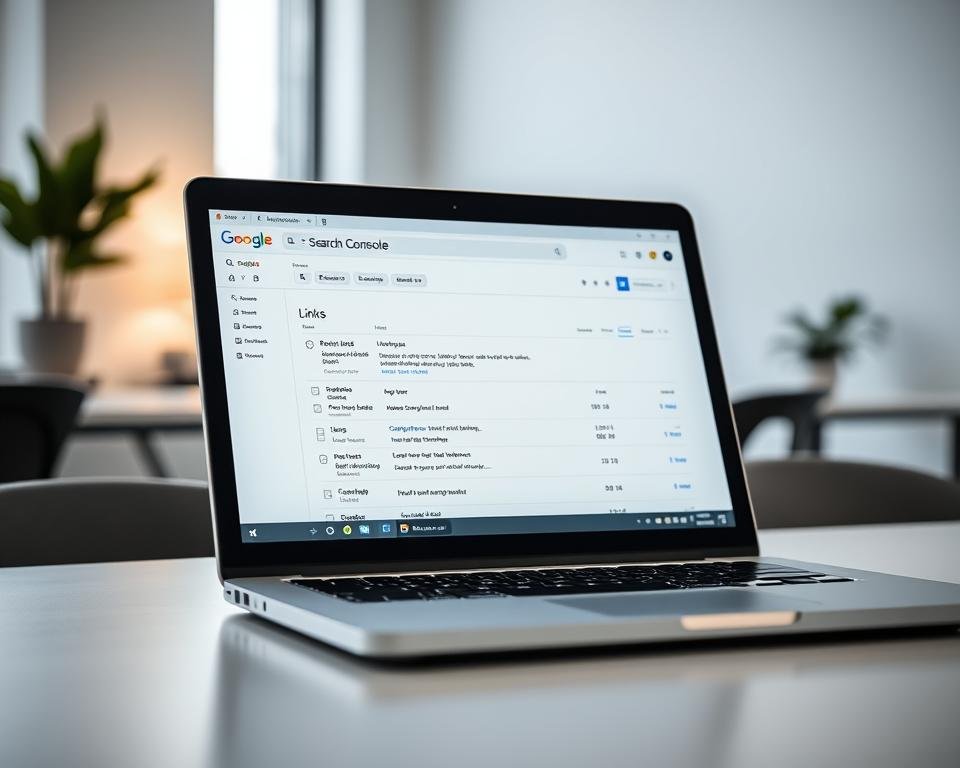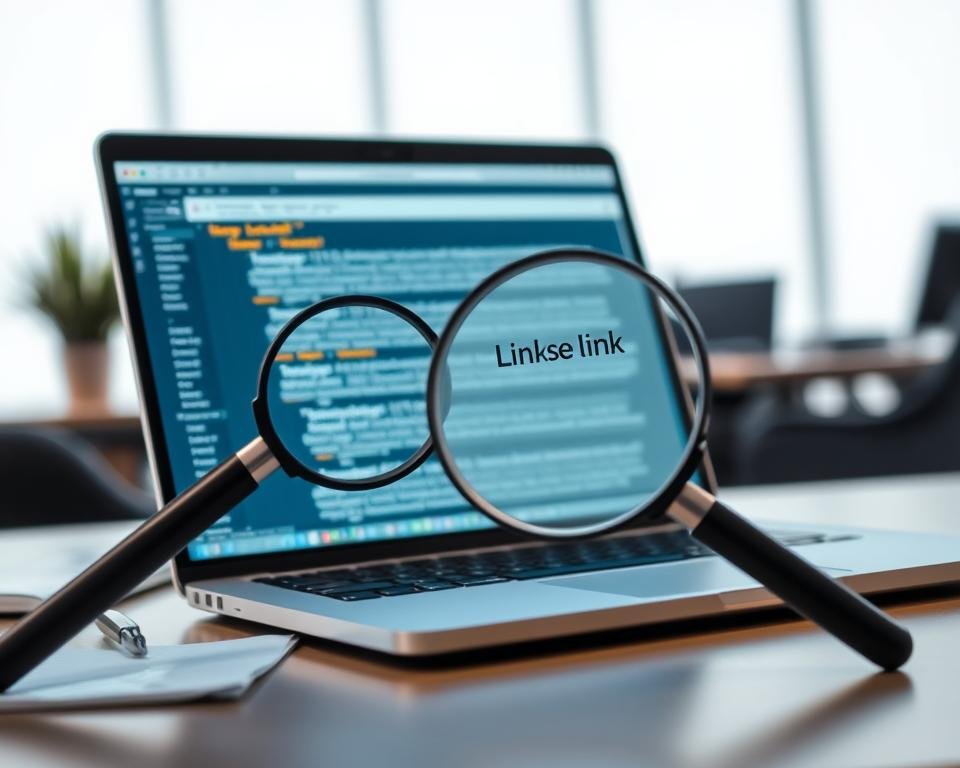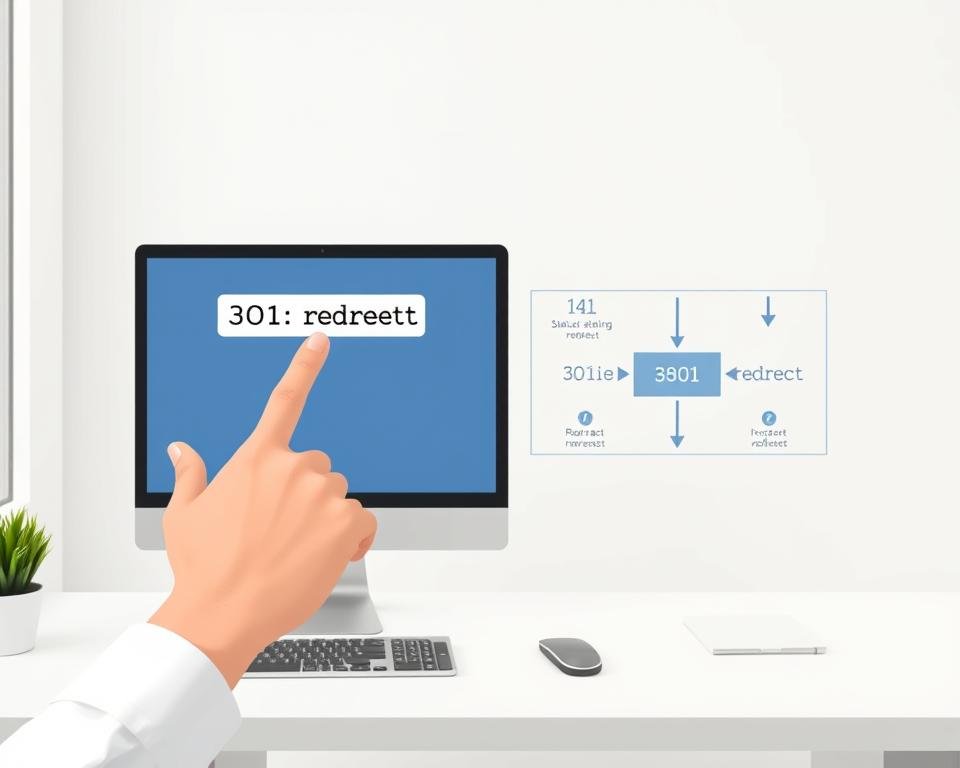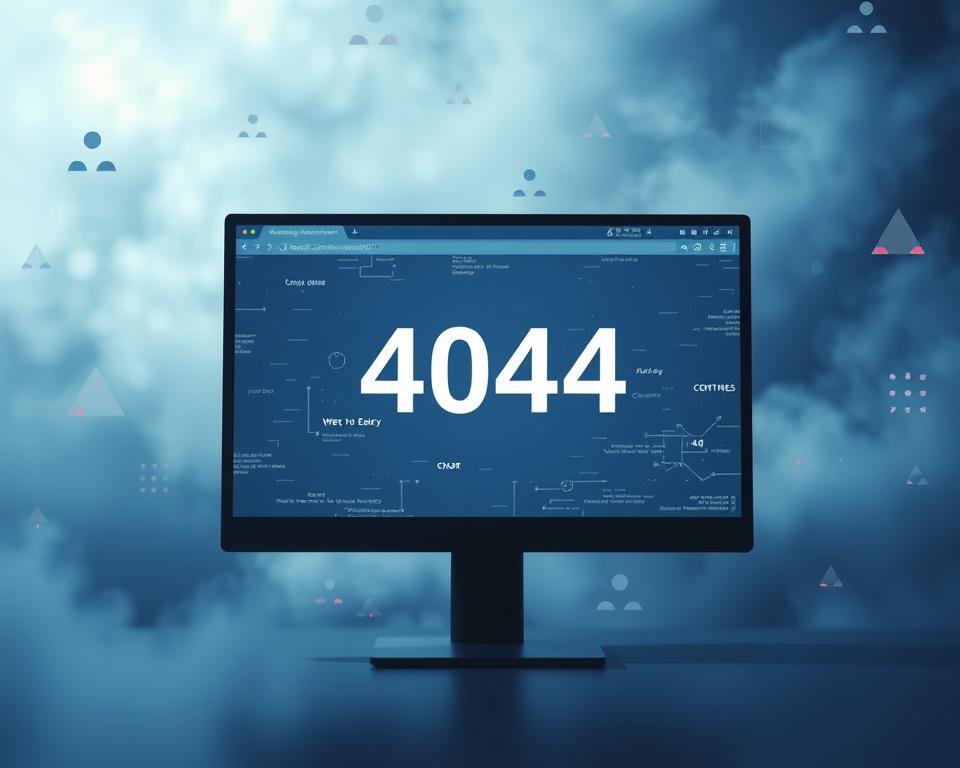Broken links can significantly impact your website’s user experience and search engine rankings. As a website owner, it’s essential to identify and repair these links to maintain a user-friendly and search engine optimized site.
I will guide you through a step-by-step process to locate and fix broken links using a broken link checker and performing a thorough website link audit. This will ensure your website remains accessible and reliable for your visitors.
By regularly checking for and fixing broken links, you can improve your website’s overall performance and enhance your online presence.
Key Takeaways
- Identify broken links using a broken link checker tool.
- Perform a website link audit to detect and fix broken links.
- Improve user experience by fixing broken links.
- Enhance search engine rankings by maintaining a link-friendly website.
- Regularly check for broken links to ensure website reliability.
Understanding Broken Links and Their Impact
Understanding the concept of broken links is crucial for maintaining a healthy and functional website. Broken links can significantly affect both user experience and search engine optimization (SEO).
Broken links are URLs that lead to non-existent or deleted pages on a website. They can occur due to various reasons such as website redesign, content removal, or typos in the URL.
What Are Broken Links?
Broken links, also known as dead links, are hyperlinks that point to pages that no longer exist or have been moved without a proper redirect. They can be internal (linking to pages within the same website) or external (linking to pages on other websites).
Why Do Broken Links Occur?
There are several reasons why broken links occur. Some common causes include:
- Website redesign or restructuring
- Content removal or deletion
- Typos or incorrect URLs
- External links that have been changed or removed by other websites
The following table summarizes the common causes of broken links:
| Cause | Description |
|---|---|
| Website Redesign | Changes in website structure or URL formats |
| Content Removal | Deletion or removal of pages or content |
| Typos or Incorrect URLs | Human error in typing or entering URLs |
| External Link Changes | Changes or removal of links on external websites |
Impact on User Experience
Broken links can significantly impact user experience by leading to frustration and a high bounce rate. When users encounter broken links, they may perceive the website as unprofessional or unmaintained.
Effective web link maintenance is crucial for providing a seamless user experience and maintaining good SEO practices. Regularly checking for and fixing broken links is an essential task for website administrators.
Identifying Broken Links on Your Site
I will guide you through the process of identifying broken links on your website, a crucial step in website broken link repair. To start, it’s essential to understand that identifying broken links is a fundamental aspect of maintaining a healthy and functional website.
Using Online Tools to Locate Broken Links
Utilizing online tools is an efficient method for repairing broken URLs on your site. There are several tools available that can scan your website and identify broken links. Some popular options include Ahrefs, SEMrush, and Moz. These tools not only identify broken links but also provide insights into why they are broken and suggest fixes.

Manual Checking of Internal Links
While online tools are incredibly helpful, manually checking internal links is also a crucial step. This involves navigating through your website and checking each link to ensure it leads to the correct page. It’s a time-consuming process but can be effective, especially for smaller websites or for verifying the accuracy of automated tools.
To manually check internal links, start by creating a list of key pages on your site. Then, systematically check each link, noting any that are broken. This process can help you identify patterns or common issues that may be contributing to the broken links.
Checking External Links
External links, which point to other websites, can also become broken over time. Checking these links is important because they can impact your website’s credibility and user experience. Tools like Xenu’s Link Sleuth or external link checkers in SEO software can help automate this process.
When checking external links, it’s also a good practice to verify that the linked content is still relevant and useful to your users. This not only helps in maintaining a good user experience but also supports your website’s SEO efforts by ensuring that your outbound links are of high quality.
Utilizing Google Search Console for Link Issues
Google Search Console is a vital tool for identifying and resolving link issues on your website. By leveraging its features, you can significantly improve your website’s link health and overall search engine ranking.
Setting Up Google Search Console
To start using Google Search Console, you need to set it up for your website. This involves verifying your site ownership and configuring the necessary settings.
- Create a Google Search Console account and add your website as a property.
- Verify your ownership of the website using one of the recommended methods (e.g., HTML file upload, meta tag, or DNS record).
- Configure your preferred settings, such as geotargeting and crawl frequency.
Finding and Fixing Links via Search Console
Once Google Search Console is set up, you can use it to identify and fix broken links on your website. Here are the steps to follow:
- Navigate to the “Coverage” report to identify pages with errors or warnings.
- Use the “Links” report to analyze your website’s internal and external linking structure.
- Identify broken links and prioritize them based on their impact on your website’s traffic and search engine ranking.
By regularly monitoring Google Search Console and addressing link issues promptly, you can maintain a healthy link profile and improve your website’s visibility in search results.

- Improved website crawlability and indexing.
- Enhanced link health and reduced broken links.
- Better search engine ranking and visibility.
How to Fix Internal Broken Links
Internal broken links can significantly impact user experience; let’s explore how to fix them. Fixing internal broken links is crucial for maintaining a website that is both user-friendly and search engine optimized.
Updating URLs
When a page’s URL changes, it’s essential to update any internal links pointing to the old URL. This ensures that users and search engines can access the correct page. To update URLs effectively, I recommend using a broken link checker tool to identify and locate all instances of the old URL.
The process involves:
- Identifying the old URL and the new URL.
- Using a site crawler or link checker tool to find all instances of the old URL.
- Updating the internal links to point to the new URL.
Redirecting Broken Links
If a page has been moved or deleted, setting up a redirect is crucial. This tells search engines and users that the page has been permanently moved to a new location. I use 301 redirects for this purpose, as they are the most search engine friendly.
To redirect broken links:
- Identify the broken link using a broken link checker tool.
- Determine the new location of the page or content.
- Set up a 301 redirect from the old URL to the new URL.
Deleting Unused Pages
Sometimes, a page is no longer needed or relevant. In such cases, deleting the page is the best course of action. However, it’s crucial to remove any internal links pointing to the deleted page to avoid creating broken links.
The steps to delete unused pages include:
- Identifying unused pages through website audits and analytics.
- Removing or updating internal links that point to the unused page.
- Deleting the unused page from the website.
By following these steps, I can ensure that my website remains well-maintained, with a robust internal linking structure that enhances both user experience and search engine optimization.
Fixing External Broken Links
Repairing broken URLs, especially external ones, is crucial for a well-maintained website. External broken links can significantly impact your website’s credibility and user experience.
To address external broken links effectively, you need to consider a few strategic steps. First, it’s essential to identify the broken links and understand their impact on your website.
Updating to the New URL
If an external link is broken due to a URL change, updating to the new URL is a straightforward solution. This involves replacing the old URL with the new one. You can use online tools to find the updated URL or search for the resource directly.
Steps to update to the new URL:
- Identify the broken external link.
- Search for the updated URL using search engines or online tools.
- Replace the old URL with the new one on your website.
Reaching Out to Webmasters for Requests
In some cases, reaching out to the webmaster of the linking site can be an effective way to fix broken external links. If the linked page has been moved or removed, the webmaster may be able to update the link or provide an alternative.
Tips for reaching out to webmasters:
- Be polite and professional in your communication.
- Clearly state the issue and provide the necessary details.
- Thank them for their time and assistance.
Considering Alternative Resources
If a broken external link cannot be fixed, considering alternative resources is a viable option. This involves finding a similar or equivalent resource that can serve the same purpose.
Steps to find alternative resources:
- Identify the purpose of the broken link.
- Search for alternative resources that serve the same purpose.
- Evaluate the credibility and quality of the alternative resource.

Effective website broken link management involves a combination of these strategies. By updating to new URLs, reaching out to webmasters, and considering alternative resources, you can maintain a healthy external linking structure.
| Strategy | Description | Benefits |
|---|---|---|
| Updating to the New URL | Replacing old URLs with new ones | Fixes broken links, improves user experience |
| Reaching Out to Webmasters | Contacting webmasters to update links | Can lead to link updates, improves credibility |
| Considering Alternative Resources | Finding equivalent resources | Maintains link relevance, enhances user experience |
The Importance of Regular Website Audits
To keep your website running smoothly and efficiently, regular audits are not just beneficial, they’re necessary. Regular website audits help in maintaining a healthy and optimized website, which is crucial for providing a good user experience and improving search engine rankings.
Conducting Periodic Audits
Conducting periodic audits involves a thorough examination of your website’s structure, content, and links. This process helps identify broken links, outdated content, and other issues that could be hindering your website’s performance. By doing so, you can take corrective actions to enhance your website’s overall quality and user experience.
Key aspects to focus on during an audit include:
- Checking for broken internal and external links
- Assessing content relevance and quality
- Evaluating website navigation and user experience
- Identifying opportunities for improvement in link building best practices
Tools for Website Audits
There are several tools available that can assist in conducting a comprehensive website audit. Some of the most effective tools include:
| Tool | Description | Key Features |
|---|---|---|
| Ahrefs | Comprehensive SEO toolset | Broken link detection, backlink analysis |
| Screaming Frog | SEO spider tool | Website crawling, technical SEO audit |
| Google Search Console | Free tool for monitoring website performance | Search analytics, link analysis |
How Often Should You Audit?
The frequency of website audits depends on several factors, including the size of your website, the frequency of content updates, and your link building activities. As a general rule, it’s advisable to conduct a thorough website link audit at least once every six months. However, for larger or more dynamic websites, more frequent audits may be necessary.

By incorporating regular website audits into your maintenance routine, you can ensure that your website remains optimized, user-friendly, and competitive in search engine rankings. This proactive approach to website management is a key component of effective link building best practices.
Implementing 301 Redirects for Broken Links
To maintain a user-friendly website, it’s essential to understand how to implement 301 redirects for broken links. Broken links can negatively impact your website’s SEO and user experience, but using 301 redirects can help mitigate these issues.
What is a 301 Redirect?
A 301 redirect is a permanent redirect from one URL to another. It informs search engines that a page has been permanently moved to a new location. This is particularly useful when you’ve changed the URL structure of your website or when a page has been moved or removed.
When a user or search engine tries to access the original URL, the 301 redirect sends them to the new URL, ensuring that they reach the intended page. This helps in preserving the link equity and ranking of the original page.
Benefits of Setting Up Redirects
Setting up 301 redirects offers several benefits, including:
- Preserving Link Equity: By redirecting the old URL to the new one, you preserve the link equity and ranking of the original page.
- Improving User Experience: Users are directed to the correct page, reducing the likelihood of encountering a “404 Not Found” error.
- Maintaining SEO Rankings: 301 redirects help search engines understand that the page has been moved, ensuring that the SEO rankings are maintained.

How to Set Up a 301 Redirect
Setting up a 301 redirect can be done in several ways, depending on your website’s platform and server configuration. Here are the general steps:
- Identify the Old and New URLs: Determine the URLs that need to be redirected.
- Access Your Website’s Server: You may need to access your website’s .htaccess file (for Apache servers) or use a plugin (for CMS like WordPress).
- Create the Redirect: For Apache servers, you can add a line to your .htaccess file:
Redirect 301 /old-url/ http://www.example.com/new-url/. For other servers or CMS, the process may vary. - Test the Redirect: Ensure that the redirect is working correctly by testing it in a browser.
By following these steps, you can effectively implement 301 redirects for broken links on your website, improving both user experience and SEO.
Monitoring Your Website for Future Broken Links
I recommend setting up a system to monitor your website for broken links to avoid user experience issues. Regular monitoring is essential for maintaining a healthy website, especially when it comes to website broken link management and repairing broken URLs.
To start, it’s crucial to understand the different methods available for monitoring your website. This includes setting up alerts, utilizing automated tools, and keeping track of backlinks.
Setting Up Alerts
Setting up alerts is a proactive way to stay informed about the status of your website’s links. Tools like Google Search Console can be configured to send notifications when new broken links are detected. This allows you to address issues promptly, minimizing the negative impact on your site’s user experience.
Using Automated Tools
Automated tools are invaluable for efficiently monitoring your website. These tools can crawl your site regularly, identifying broken links and providing detailed reports. Some popular automated tools include Ahrefs, SEMrush, and Moz. By leveraging these tools, you can streamline the process of repairing broken URLs and maintaining a robust link structure.

Keeping an Eye on Backlinks
Backlinks are an essential aspect of your website’s linking structure. Monitoring backlinks helps you identify potential issues before they become problematic. It’s also an opportunity to engage with other websites that are linking to you, potentially leading to collaborations or guest blogging opportunities.
| Monitoring Method | Description | Benefits |
|---|---|---|
| Setting Up Alerts | Configure tools to send notifications for new broken links. | Prompt issue resolution, improved user experience. |
| Using Automated Tools | Utilize tools that crawl your site and report on broken links. | Efficient monitoring, detailed reporting. |
| Keeping an Eye on Backlinks | Monitor links pointing to your website. | Early issue detection, potential collaboration opportunities. |
By implementing these monitoring strategies, you can ensure your website remains healthy and user-friendly. Regular monitoring is a critical component of website broken link management, allowing you to identify and fix issues before they escalate.
Educating Your Team About Link Maintenance
To maintain a robust online presence, it’s essential to educate your team on link maintenance best practices. A well-informed team can significantly reduce the occurrence of broken links, enhancing the overall user experience on your website.

Training Content Creators
Content creators play a vital role in link maintenance. They should be trained to understand the importance of using accurate and up-to-date links within their content. This includes understanding how to properly cite sources and how to check the validity of links before publishing.
Some best practices for training content creators include:
- Regular workshops on link building best practices
- Guidelines on how to identify and report broken links
- Encouraging the use of link checking tools
Best Practices for Maintaining Links
Implementing best practices for link maintenance is crucial for a healthy website. This includes regularly reviewing and updating links, as well as having a clear policy for handling broken links.
| Best Practice | Description | Benefits |
|---|---|---|
| Regular Link Audits | Conduct periodic audits to identify broken links | Reduces user frustration, improves SEO |
| Link Checking Tools | Use automated tools to check link validity | Saves time, increases efficiency |
| Clear Link Policy | Establish a clear policy for handling broken links | Ensures consistency, reduces errors |
Establishing a Review Process
A robust review process is essential for effective link maintenance. This involves regularly reviewing links, identifying broken links, and taking corrective action.
Key elements of a review process include:
- Regularly scheduled reviews of website links
- Use of automated tools to identify broken links
- A clear protocol for fixing or removing broken links
By educating your team on link maintenance and implementing these best practices, you can significantly improve the health and usability of your website.
Conclusion: Keeping Your Website Link Healthy
Maintaining a healthy linking structure is crucial to your website’s success. By following the steps outlined in this article, you can ensure that your website remains user-friendly and search engine optimized.
Key Takeaways for Link Maintenance
To fix broken links, it’s essential to identify them using tools like a broken link checker, and then take corrective actions such as updating URLs, redirecting broken links, or deleting unused pages. Regular website audits play a vital role in maintaining a healthy linking structure.
Ongoing Link Management Strategies
Ongoing link management involves regularly monitoring your website for new broken links, setting up alerts, and using automated tools to streamline the process. By doing so, you can prevent broken links from negatively impacting your website’s user experience and search engine rankings.
Benefits of a Well-Maintained Website
A well-maintained website not only improves user experience but also enhances your website’s credibility and search engine rankings. By following the strategies outlined in this article on How to Fix Broken Links on Your Website, you can ensure your website remains optimized and user-friendly.
